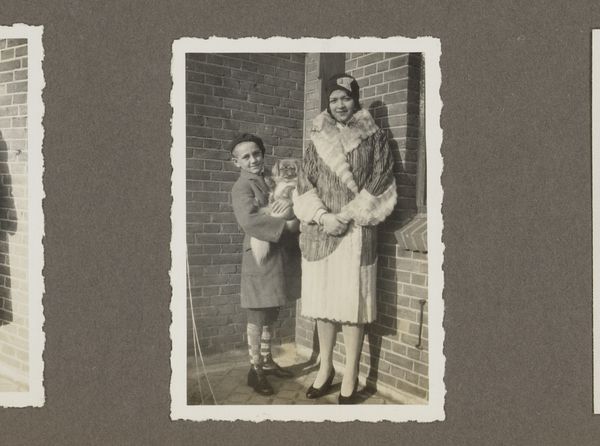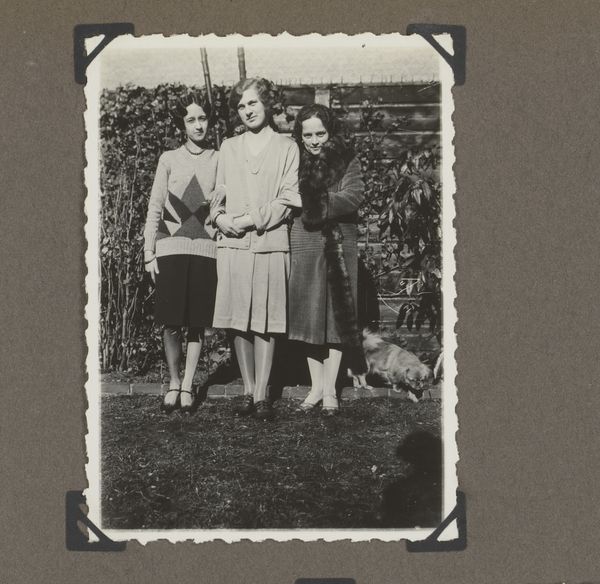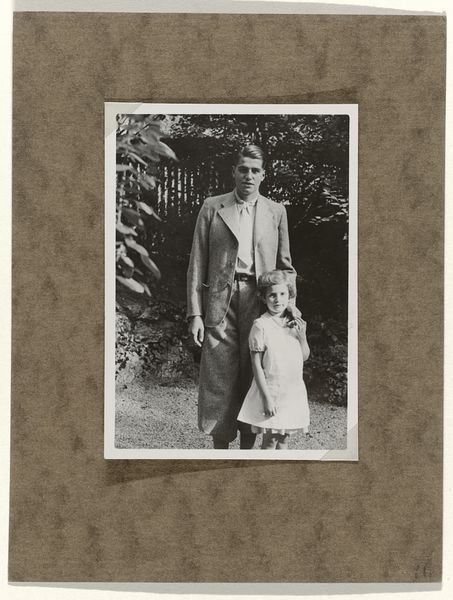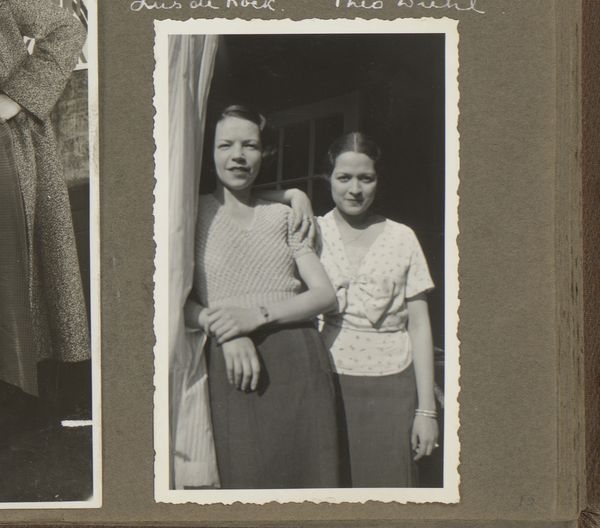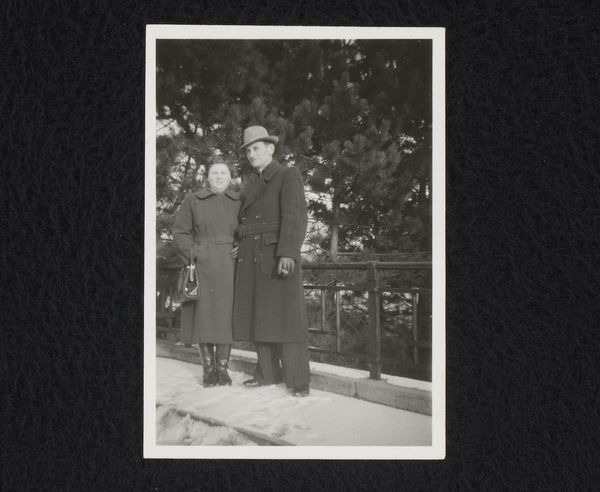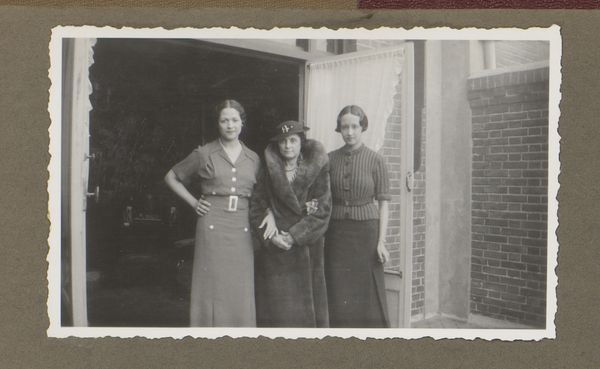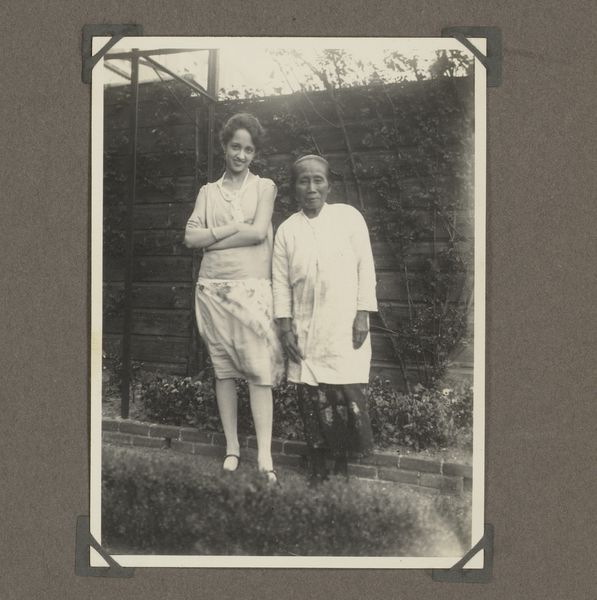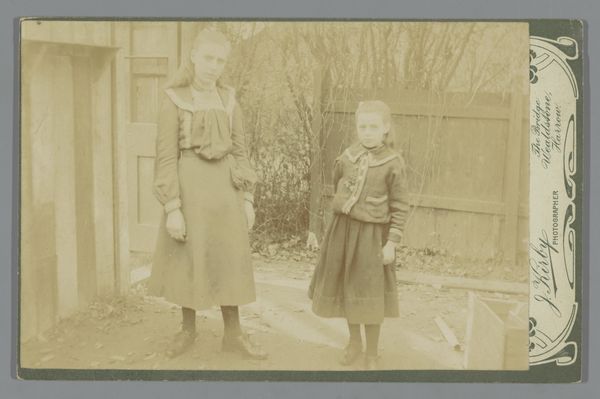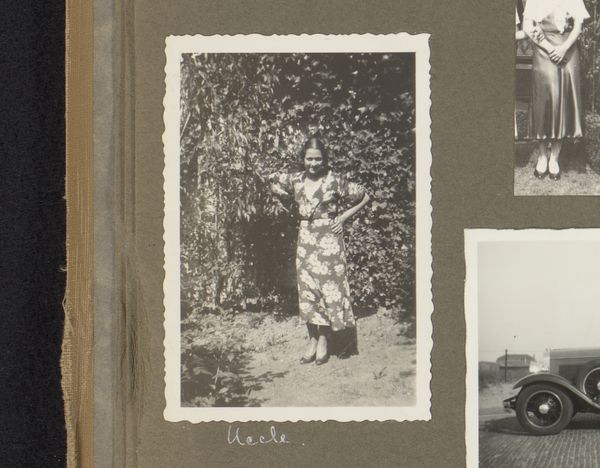
photography
#
portrait
#
street-photography
#
photography
#
realism
Dimensions: height 85 mm, width 61 mm
Copyright: Rijks Museum: Open Domain
Editor: Here we have a photograph entitled "Portret van Dicky Baud en Dootje van Zijll de Jong," taken sometime between 1930 and 1935. It strikes me as such a formal portrait for what looks like a candid shot in a neighborhood! What do you see in this piece? Curator: I see a fascinating negotiation of identity and social class within the context of early 20th-century Dutch society. The children, seemingly poised between childhood and adulthood, are deliberately styled – the boy in his tailored coat and patterned socks, the girl in what looks like her mother’s glamorous fur. The stark brick wall backdrop contrasts with their careful presentation. How does this contrast resonate with you? Editor: I hadn't really thought of the setting. It's like a backdrop, nothing special, sort of negates that aspiration somehow. Almost like a school photo backdrop, though I suppose it could be the side of their house. Curator: Exactly. Consider the politics inherent in portraiture. Whose stories are deemed worthy of documentation and display? Why choose street photography as a medium to depict what would otherwise be formal portraits? What do you make of that aesthetic choice in the interwar period in the Netherlands? Editor: Hmm... Well, it makes me think about how these everyday representations democratized art in a way that had rarely been done. Making photographs on the street makes portraits far more accessible. It challenges who gets remembered and represented. Curator: Precisely. And through the lens of realism, photography at this moment has a specific connection to broader narratives about class and representation. Considering its photographic nature, this portrait allows us to access social strata, revealing not only who they are, but also who they want to be, don't you agree? Editor: I hadn't thought of it that way. I’m really appreciating the deeper layers that photography has in representing our lives, not only their presence but also their aspirations and place in time. Curator: Absolutely, this photograph allows a nuanced perspective on the complex interactions of aspiration, representation, and identity in the past.
Comments
No comments
Be the first to comment and join the conversation on the ultimate creative platform.
